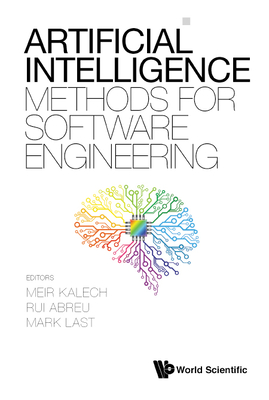-
出版商:
CreateSpace Independ
-
出版日期:
2013-10-22
-
售價:
$1,300
-
貴賓價:
9.5 折
$1,235
-
語言:
英文
-
頁數:
286
-
裝訂:
Paperback
-
ISBN:
1481061402
-
ISBN-13:
9781481061407
-
相關分類:
Data-mining
商品描述
Please note that I am not very happy with the Kindle version... ---------------------------------------------------------- Dario Mangano obviously spent a great deal of time and effort on his book. It is quite lengthy and very detailed. It is presented in a very organized fashion. He began by including a historic background and then explaining the Integrated Data Hub concept. He also created an actual plan for others to follow by explaining and detailing his ideas. It’s amazing! He is extremely thorough, writing chapter after chapter, dealing with various components that the reader needs to understand. In the forward by Hans Hultgren, Hans writes, “This book is a guide to a successful data warehousing business intelligence (DWBI) program.” I believe that this could be a really useful book to many people, an actual “how to guide” for them to utilize in implementing their own program. I was so impressed by his attention to visual affects in his book. Many people are visual learners. Mangano draws them into reading and using his work by adding pictures, diagrams, highlighting something by boxing it in visually, etc. For example, when sharing a definition right in chapter one he boxed it in. He wrote “Data integration involves combining data residing in different sources and providing users with a unified view of these data. This process becomes significant in a variety of situations, which include both commercial (when two similar companies need to merge their databases) and scientific (combining research results from different bioinformatics repositories, for example) domains. Data integration appears with increasing frequency as the volume and the need to share existing data explodes. It has become the focus of extensive theoretical work, and numerous open problems remain unsolved. In management circles, people frequently refer to data integration as "Enterprise Information Integration" (EII). (From Wikipedia, the free encyclopedia) This is long but very important and he found a way for it to stand out. Using these sorts of strategies and implementations in his book really cemented the fact that not only does he know his material, he took the time and effort to present it in a fashion that will be easily read by many. His diagrams and charts are so spot on and create a handbook that will be able to be used by many! In Chapter 9 Dario writes, “In a traditional EDW reference architecture, you should find something called Operational Data Store (ODS) exactly at the place where I have put my HiST layer. But be careful, the HiST layer is not an ODS! The HiST layer is not a good place to do Operational Reporting. The data are not integrated and the real historization is not yet performed.” The way he writes is very directive and he explains concepts in a way that literally walks people through steps. By using his book, it is as though he is there as a consultant. I love this style of writing and it is rare to find it. He is well read on his subject and offers both critiques and accolades for others who have written in this area. For example he writes, “Despite the slight criticisms that I have done on Ralph Kimball's work in a previous chapter, I still believe that star schemas are best suited to meet queries destined for Analytical Reporting.” The Bibliography is very thorough and well done. By asking Hans Hulgren to do a forward was an excellent plan since Hulgren has much space in the Bibliography and is obviously a large part of Mangano’s learning. The organizational style is superb and by detailing each diagram used in the Table of Figures this will be a great way for users of the book to look up a figure that they wish to refer back to. Chapter headings, boxed in information as I alluded to before all create a useful, easy to read document that should become a well-known book in this field. Congratulations on a job well done! Jan Hemmington, M.S., Ph.D.
商品描述(中文翻譯)
請注意,我對Kindle版本並不太滿意... ---------------------------------------------------------- Dario Mangano顯然在他的書上花了大量的時間和精力。這本書相當冗長且非常詳細,呈現得非常有條理。他首先提供了歷史背景,然後解釋了整合數據中心(Integrated Data Hub)的概念。他還通過解釋和詳細說明他的想法,為其他人創建了一個實際的計劃。這真是令人驚嘆!他非常徹底,一章接一章地寫,處理讀者需要理解的各種組件。
在Hans Hultgren的前言中,Hans寫道:“這本書是成功的數據倉儲商業智慧(DWBI)計劃的指南。”我相信這本書對許多人來說會非常有用,實際上是一本“如何指南”,幫助他們實施自己的計劃。我對他在書中對視覺效果的關注印象深刻。許多人是視覺學習者。Mangano通過添加圖片、圖表、用視覺框起來突出某些內容等方式,吸引他們閱讀和使用他的作品。例如,在第一章中分享定義時,他將其框起來。他寫道:“數據整合涉及將來自不同來源的數據結合起來,並為用戶提供這些數據的統一視圖。這一過程在各種情況下變得重要,包括商業(當兩家相似的公司需要合併其數據庫時)和科學(例如,來自不同生物信息學資料庫的研究結果的整合)領域。隨著現有數據的量和共享需求的激增,數據整合的頻率也在不斷增加。它已成為廣泛理論工作的焦點,並且仍有許多未解決的開放問題。在管理圈中,人們經常將數據整合稱為“企業信息整合”(Enterprise Information Integration,EII)。 (來自維基百科,自由百科全書)
這段話雖然長,但非常重要,他找到了讓它突出的方式。在書中使用這些策略和實施方式,確實鞏固了他不僅了解自己的材料,還花時間和精力以易於閱讀的方式呈現它的事實。他的圖表和圖示非常準確,創造了一本能夠被許多人使用的手冊!
在第9章中,Dario寫道:“在傳統的EDW參考架構中,你應該能在我放置HiST層的地方找到一個叫做操作數據存儲(Operational Data Store,ODS)的東西。但要小心,HiST層不是ODS!HiST層不是進行操作報告的好地方。數據尚未整合,真正的歷史化尚未執行。”他的寫作方式非常指導性,他以逐步引導的方式解釋概念。使用他的書,就好像他作為顧問在那裡。我喜歡這種寫作風格,並且很少能找到。
他對自己的主題有深入的了解,並對其他在這個領域寫作的人提供了批評和讚譽。例如,他寫道:“儘管我在前一章中對Ralph Kimball的工作有些微的批評,但我仍然相信星型模式最適合滿足針對分析報告的查詢。”參考書目非常全面且做得很好。請Hans Hulgren撰寫前言是一個絕佳的計劃,因為Hulgren在參考書目中佔有很大篇幅,顯然是Mangano學習的重要部分。
組織風格非常出色,通過詳細說明圖表目錄中的每個圖表,這將為書的使用者提供一個很好的方式來查找他們希望參考的圖表。章節標題、我之前提到的框起來的信息,所有這些都創造了一份有用且易於閱讀的文件,應該會成為這個領域的一本知名書籍。恭喜你們完成了一項出色的工作!
Jan Hemmington, M.S., Ph.D.































